| Columns Retired Columns & Blogs |
Preliminary Investigation of the Audez'e LCD-3 and LCD-2
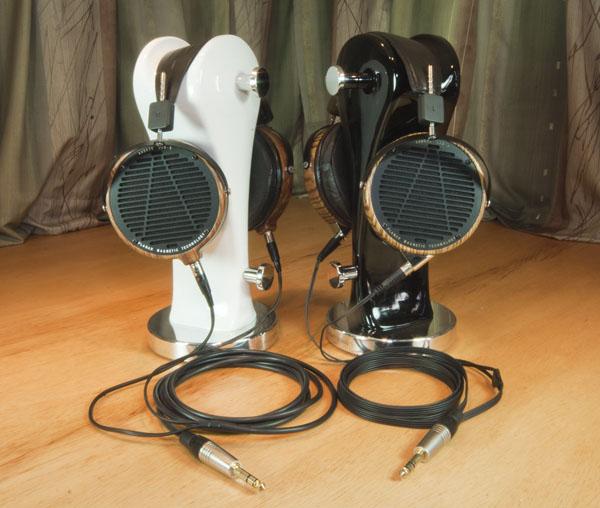
This story originally appeared at InnerFidelity.com
Audez'e LCD-2 Rev.2 ($995) and LCD-3 ($1945)
I'm calling this a preliminary investigation because I like these headphones quite a bit and I want to give them a glowing review. But under the current circumstances, I just can't.
Currently, there's a lot of controversy about the Audez'e LCD-3 in this thread at Head-Fi. There have been some driver failure problems, which Audez'e seems to have been quite responsive in addressing. But more worryingly, the idea has been developed that the LCD-3 comes in two flavors: veiled and not veiled. I was quite skeptical, so I decided to measure as many as I could get my hands on to see what turned up in the data. I've now had five pairs of LCD-3 headphones through the lab and have measured most of them at least three times each. Something, indeed, did turn up.
Before I dive into a bunch of graphs, however, I'm going to preface this post with a caution. This investigation into the differences between a single model of headphone has me questioning the repeatability of my measurements system. I've been talking with Head-Fi member Macedonian Hero, who has a great deal of knowledge about how to characterize the accuracy and repeatability of measurement systems, and we've decided to run some experiments. First experiments will be about the basic repeatability of measurements. We're going to use the Sennheiser HD 800 because in my experience it's the most repeatable headphone to measure. I mention this because as I've been measuring the LCD-3 headphones, I've also been measuring a pair of HD 800 occasionally as part of the system characterization.
Here's the cautionary note: I'm not going to be able to explain some of the things I'm seeing in the THD+noise data. I am seeing some strange things with the LCD-3 THD+noise measurements that seem rather random. I have not seen similar artifacts with the HD 800 measurements that have been taken during the same period as the LCD-3 measurements. I don't really know what to make of it. Regardless, I will be showing you the data. My point is that while I may pose some possibilities, I'm not going to jump to conclusions ... and neither should you.
I have compiled a pdf booklet of all the measurement sheets so you can follow along looking at the full data sheets. You'll find it here.
Frequency Response
Let's first look at the frequency response data. Measurements are labeled with the serial number and then a capital letter. The letter indicates subsequent measurements of that particular pair of headphones. All measurements of the same headphone happened at least one day apart. At no time did I look at the previous measurement when performing new measurements.
First, I'm going to show you graphs of each headphone's multiple frequency response measurements on the left then right channel. Keep your eye out for headphones that have a little step downward between 3kHz and 4kHz.
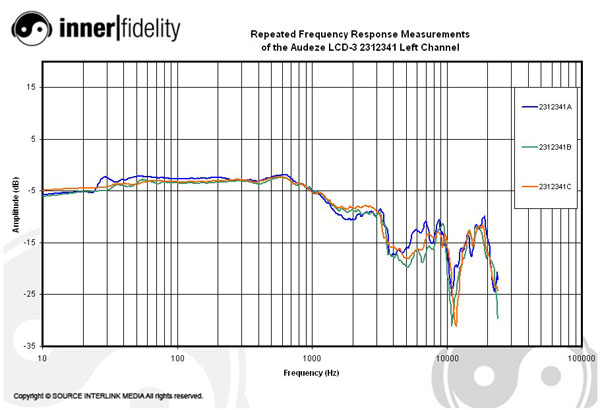
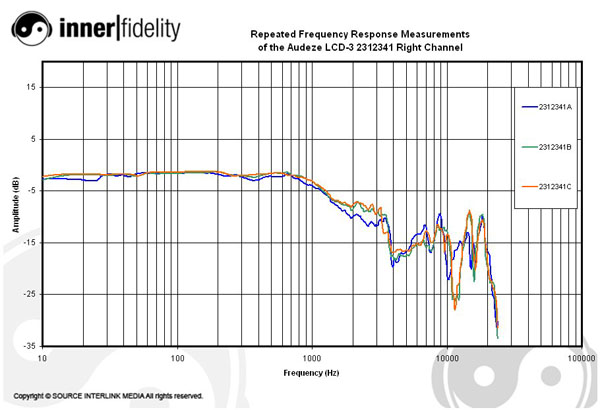
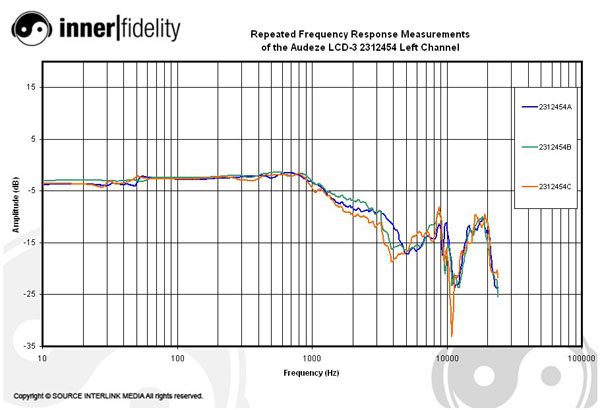
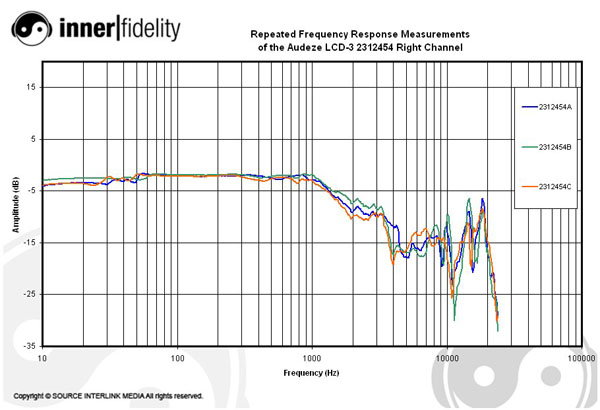
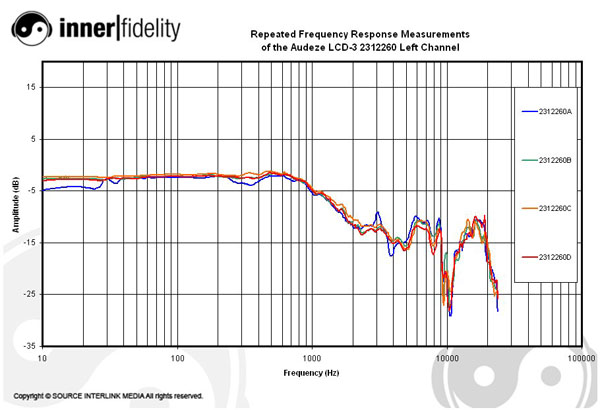
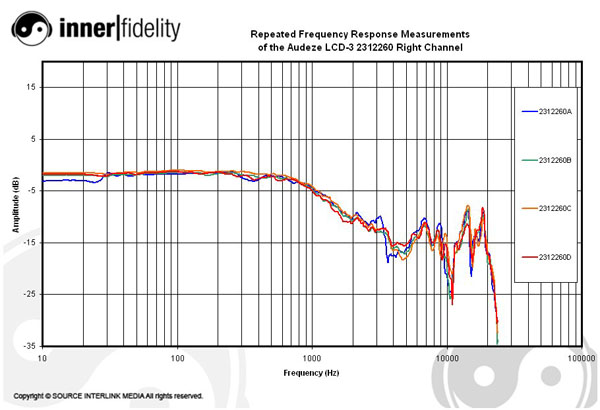
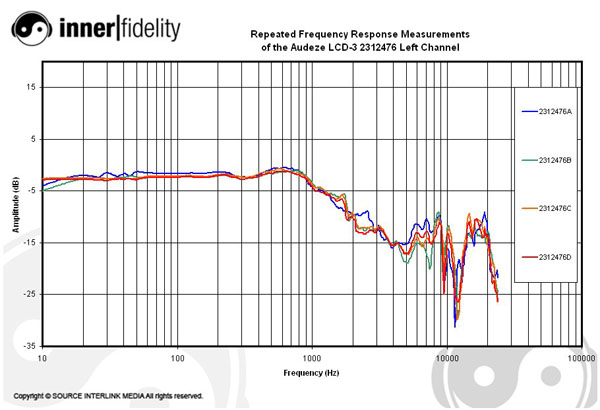
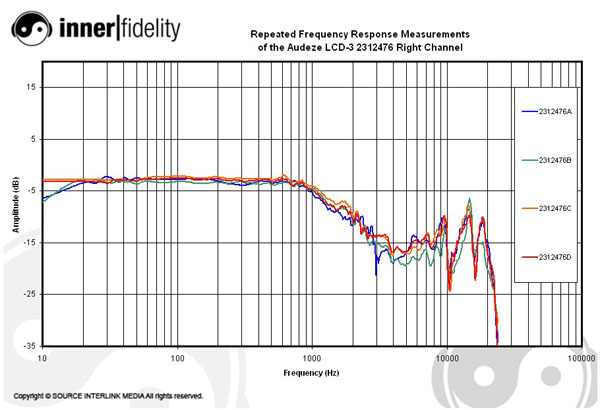
You'll notice that 2312260 and 2312476 the step between 3kHz and 4kHz is much less pronounced than with 2312341 and 2312454.
Let's look at the THD+noise measurements ...
- Log in or register to post comments




































